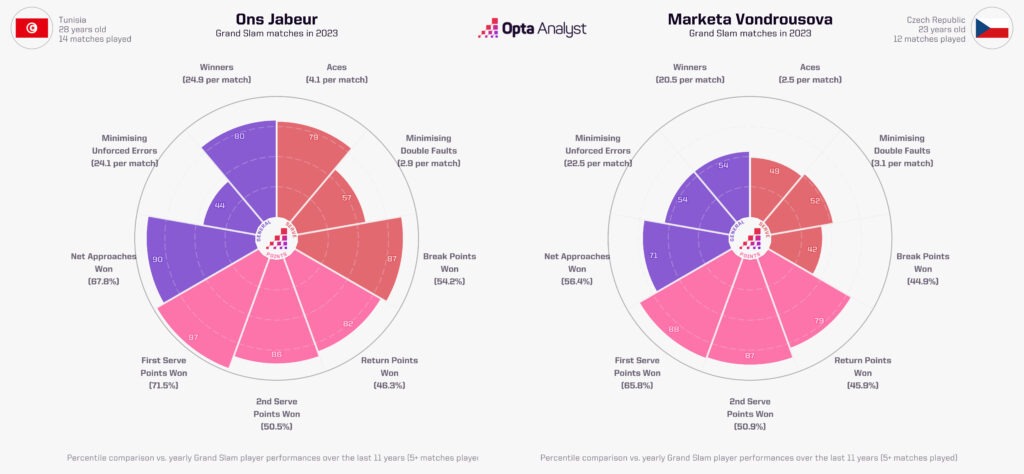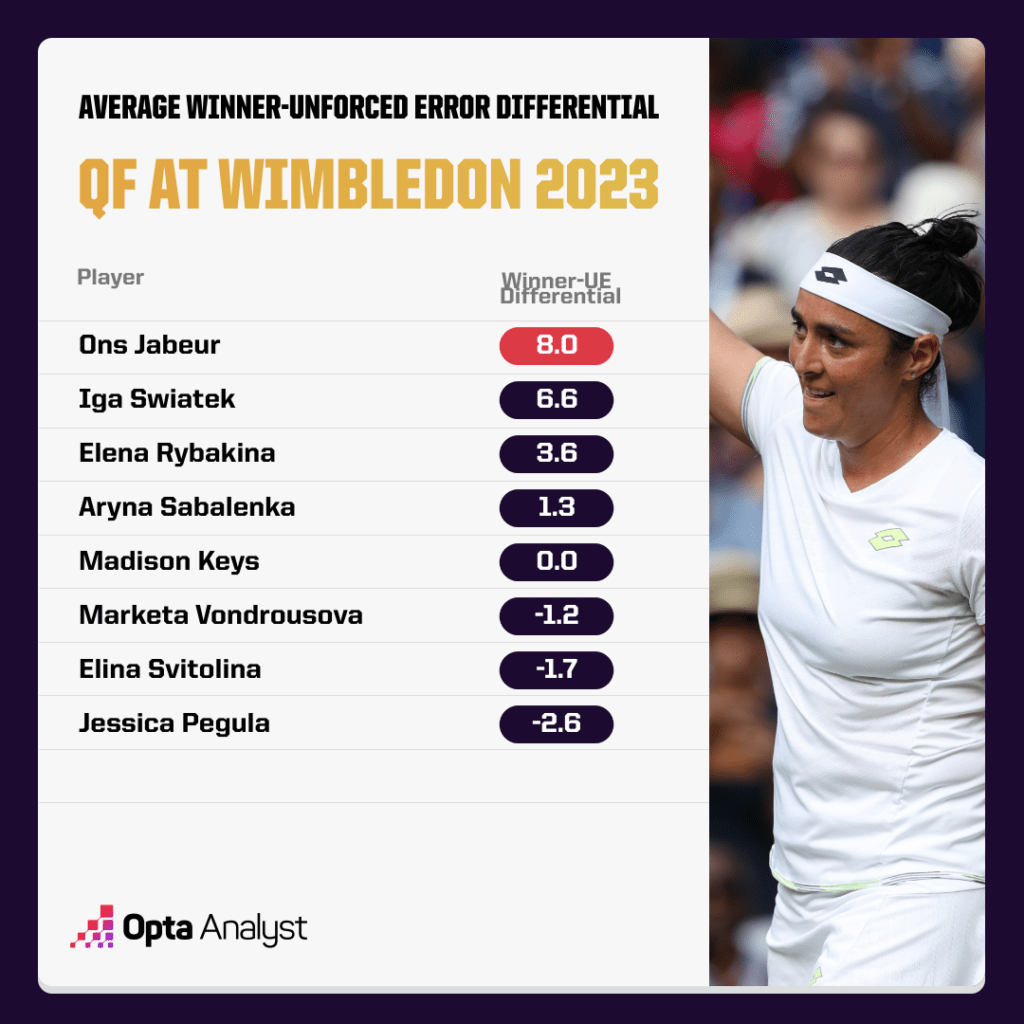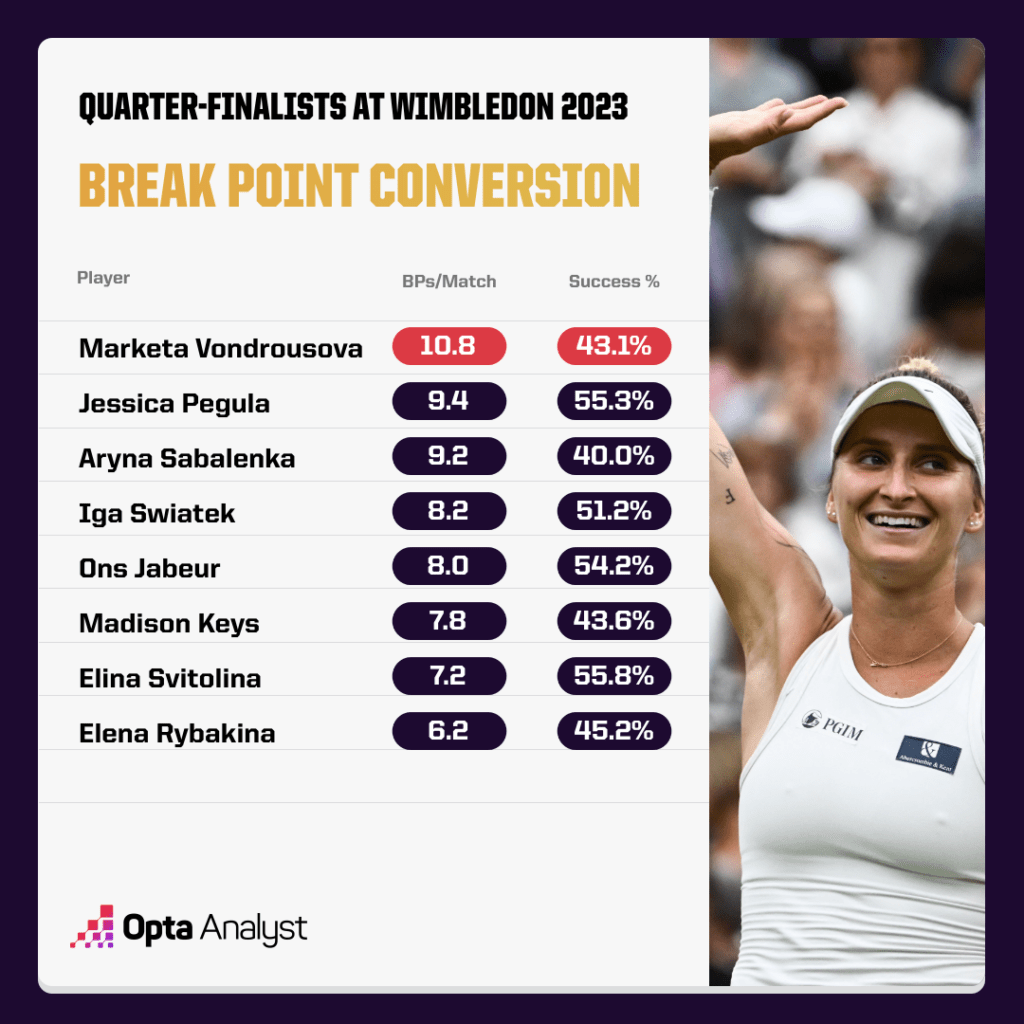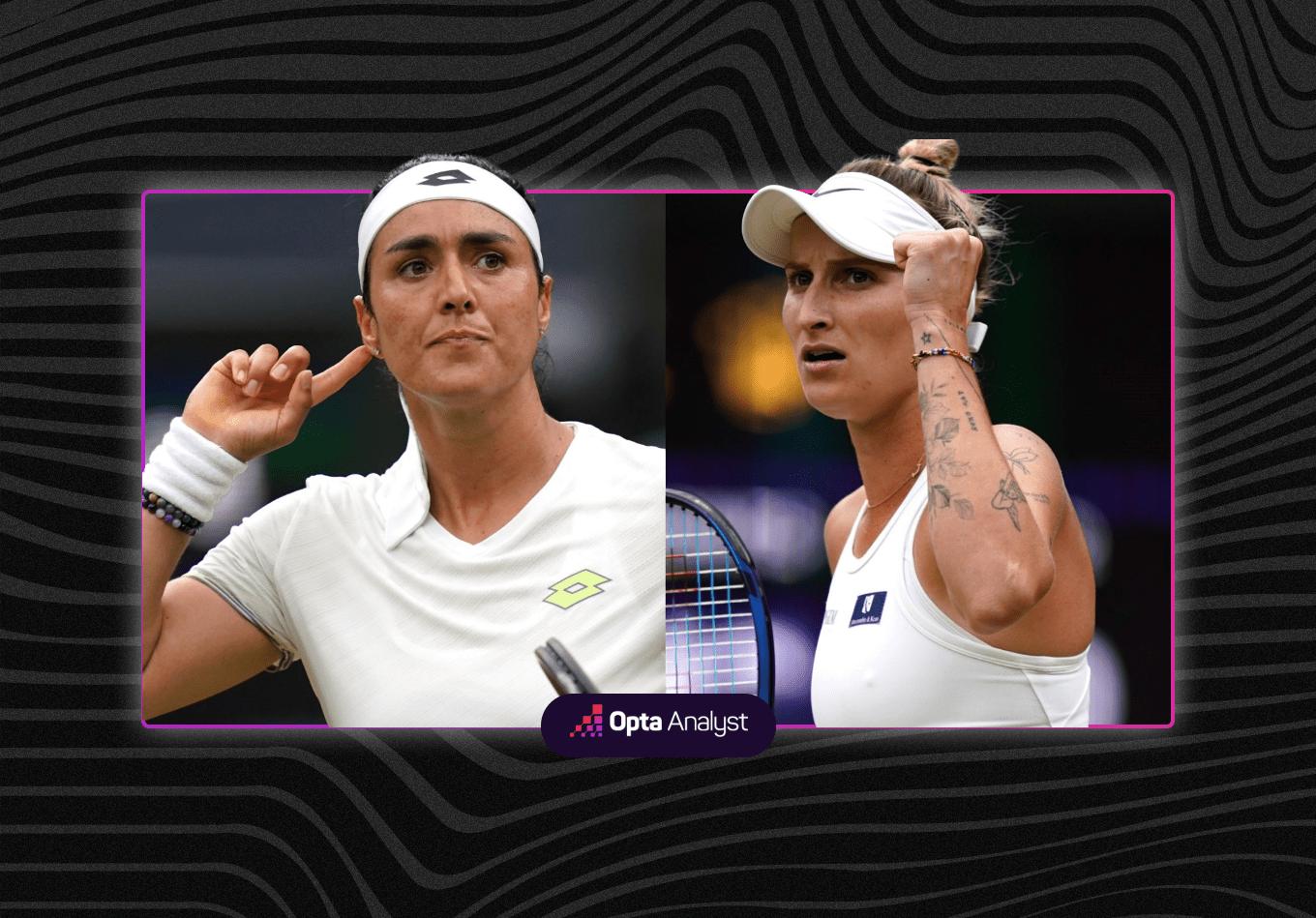One way or the other, history will be made this weekend. Ons Jabeur and Marketa Vondrousova have progressed to the Wimbledon final at the expense of more fancied opponents, and both are seeking to win their first grand slam. Jabeur’s been here before, while Vondrousova is in uncharted territory, but whoever wins will have done so by showing power is not everything on grass.
Paths to the Final
Following a drama-filled fortnight, both Jabeur and Vondrousova have absolutely deserved to get to this point at Wimbledon. Their respective paths to the Ladies’ Singles final at SW19 have been tricky to navigate and historic, but for different reasons.
Jabeur’s path to a repeat Wimbledon final represented the proverbial gauntlet, defeating four grand slam winners – including reigning Wimbledon champion Elena Rybakina. Three of those four victories came after losing the opening set, becoming only the third player to register three comeback wins en route to the Women’s Singles final at Wimbledon after Justine Henin (2001) and Marion Bartoli (2007).
Jabeur repeated another feat of Henin’s from the 2006 Australian Open, claiming consecutive comeback wins against top-five ranked opponents in the quarter-final and semi-final of a grand slam, becoming only the second player to achieve that feat since the WTA rankings were first published in 1975.
Meanwhile, Vondrousova has become the first unseeded player in the Open Era to reach the Women’s Singles final at Wimbledon, and the first to do so all-time since Billie Jean King (then Billie Jean Moffitt) in 1963. That the 24-year-old is the second-lowest ranked player (#42) to reach the Wimbledon final since the WTA rankings were introduced belies how relatively comfortable and adaptable she has been on the grass to this point. Yet, matchups are important, and it was a particularly prevalent aspect in their respective semi-finals, as both Jabeur and Vondrousova were the players largely taking the pace off the ball and counter-punching. Perhaps the most interesting question ahead of this final is who dictates the points and how this particular matchup plays out?

The Case for Jabeur
There have been two significant factors for Jabeur on the way to a second straight final at Wimbledon. The first has simply been her ability to keep the ball in play and eventually construct points that work in her favour. Among the eight quarter-finalists this year, Jabeur has the lowest average of unforced errors over the course of the tournament, at 18.3.
With the exception of Elena Rybakina (19) – who really struggled to contend with Jabeur’s relentless consistency – the rest hover around the average of 25 unforced errors per match. Meanwhile, Jabeur is still averaging 26.3 winners per match for a differential between winners and unforced errors per match of +8 at SW19 this year.
Against Aryna Sabalenka in the semi-final, Jabeur’s differential was +14. It was a statistical aspect that grew particularly pertinent as Sabalenka started haemorrhaging unforced errors from a set and a break up.
The second significant factor was that this was all happening even as Sabalenka’s first-serve rate improved to 71% in the third set. Jabeur’s been one of the better returners on the WTA Tour this year, ranking in the 79th percentile for return point percentage won at 44.5%. Over the course of this tournament, meanwhile, Jabeur has won 48.7% of total return points, with a particularly eye-watering 62.2% in the fourth round against Petra Kvitova.
If Jabeur can manage to replicate this, along with maintaining her 48% conversion rate on break points at Wimbledon this year, she’s arguably on the way to lifting the Rosewater Dish.

The Case for Vondrousova
Vondrousova’s run to the final at SW19 has been just as much about quantity as it has been about quality, but more importantly, she has been extremely dangerous on the return of serve.
Among the eight quarter-finalists at this year’s event, the world #42 is sixth for total winner-unforced error differential at -7, but has generated the most break-point chances on average among that eight. Among players who made the fourth round this year, Vondrousova (10.8) is one of three players to average 10 or more break-point opportunities a match, along with Lesia Tsurenko (12.5) and Mirra Andreeva (11.3, at 16 years old!), while converting at a rate of 43%.
Her quarter-final and semi-final matches against Jessica Pegula and Elina Svitolina respectively highlighted Vondrousova’s tactical adaptability to force the opponent out of their comfort zone. In the semi-final, Vondrousova’s array of drop shots forced the not-so-inclined Svitolina to come to the net, with the latter winning only 28.6% of those points (6/21). Vondrousova brought Pegula to the net even more regularly, winning 14 of 31 of those points, while winning 11 of 17 points at the net in comparison.

The powerful likes of Svitolina, Pegula and Donna Vekic were more compatible to Vondrousova’s game style, though, and whether she’ll be able to bait someone who’s just as tactically flexible in Jabeur could ultimately be the determinant factor.
Enjoy this? Subscribe to our mailing list to receive exclusive weekly content. And follow us on Twitter too.
